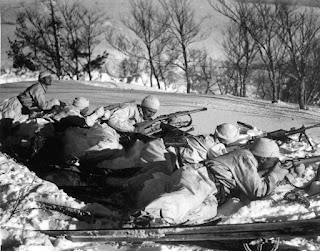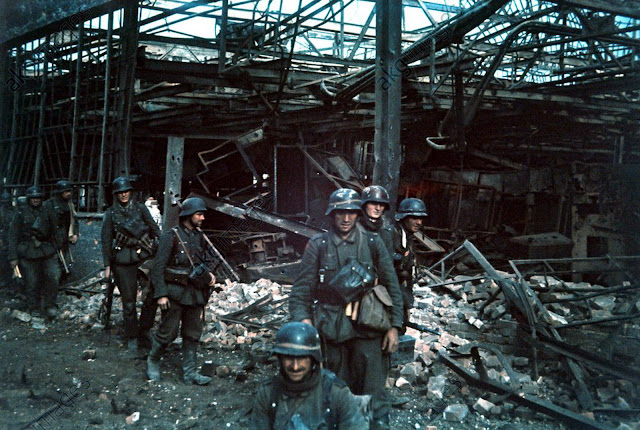ASL Gear - The Panzer 38(t)

My next delve into the ASL kitbox is into another tank – specifically a Czechoslovakian one. Czechoslovakia had a unusally good arnaments industry. Mainly because when the Austro-Hungarian Empire existed the province of Czechoslovakia had been where it had kept its main factories so when the division of that Empire had occurred post World War One the newly born country found itself in possession of a ‘larger power sized’ industry. So they started exporting.
The originally named Lt vz.38 was designed by a Russian emigre for the CKD company – Alexej Surin,who had moved out of Russia during the civil war so was presumably a ‘White Russian’. His design was a follow on to the 35 with a larger gun. The tank’s best qualities were its reliability and the size of its main arnament. Most of the German battle tanks of the time were armed with twin machine guns or a 20L. The 37L was a big upgrade on this. They were also remarkably modern, for the time though the German’s did dislike the rivetted armour.

The PzKpfw38(t)A in colours used in the Polish Campaign. You will note the large white cross. This
was initially for recognition but it was discovered that enemy anti-tank gunners found them useful
as targets. Therefore after this the cross became smaller and became either hollow or
filled with black for the more usually recognised German armed forces cross.
was initially for recognition but it was discovered that enemy anti-tank gunners found them useful
as targets. Therefore after this the cross became smaller and became either hollow or
filled with black for the more usually recognised German armed forces cross.
These tanks did differ from standard German practice in several intersting respects. Unlike the 35 the drive sprockets were at the front allowing a small degree of self cleaning. The tanks used a Prga-Wilson pre-selector five-speed gearbox to reduce the workload on the poor driver. The 6 cylinder engine could reach 42 kph and had a range of around 220km (135 miles). Finally the Czech tanks tended to use riveted armour which was not as effective as the alternatives (plus made a vehicle heavier though simpler to make). Though briefly serving as a sort of main battle tank it was a small tank and quite cramped within. Indeed this was one of the reasons the British Royal Armoured Corps gave for not buying any of the tanks along with
“the (bow) gunner could not sit back comfortably as the wireless set was in the way of his left shoulder”.
Plus the British found is difficult to shoot accurately on the move (something the Brits were obsessed about prior to World War 2 – see the Crusader tank ASL Gear post)
Equally some of the Germans also disfavoured the tank including tank-ace Otto Carius
The Czech tank, the Panzer 38t, roughly corresponded to the Panzer III. Besides having a poorer quality of steel, it also had the dis-advantage of only having four men in it. The tank commander had to observe and fire simultaneously
Since the tank was mainly supplementing fleets of Panzer II’s this is perhaps an unfair comparison.

The Pz38(t)’s swansong was probably France where it provided the main equipment for Rommels 7th ‘Ghost’ Division with no less than 228 of the model being in use. Rommel’s use of the tank was masterfull. For this attack he recognised that tank for tank the German tanks would lilely lose against heavier opponents so whenever he encountered armoured resistance he resisted the temptation to fight but instead bypassed them allowing anti-aircraft, anti-tank and infantry units to deal with them.

This looks like a photo of Rommel in tank ’01’ so that might be correct..

The 7th Panzer Division in France 1941
After that they were a large minority of German tanks during the invasion of Russia where appalling German intelligence had presumed they would only have to deal with BT variants – the T34 and KV tanks proved a nasty surprise to the entire German tank corps though after their experiences in France against the Chad they perhaps should have been less surprised. Here as well due to the great distances the tanks would often get seperated from divisional infantry and anti-tank units so would have to handle opposing forces themselves.
Otto Carius also described getting hit within a Panzer 38t
They put us out of commission just this side of the wood line on the other side of the river. It happened like greased lightning. A hit against our tank, a metallic crack, the scream of a comrade, and that was all there was! A large piece of armour plating had been penetrated next to the radio operator’s seat. No one had to tell us to get out. Not until I had run my hand across myface while crawling in the ditch next to the road did I discover that they had also got me. Our radio operator had lost his left arm. We cursed the brittle and inelastic Czech steel that gave the Russian 47-mm AT gun so little trouble. The pieces of our own armour plating and assembly bolts caused considerably more damage than the shrapnel of the round itself.
Beyond the fact that I doubt a Panzer II would have stood up any better (even in ASL terms a 47mm has a to kill of 10 which only needs around a 6 to kill against the better armoured models). This is evocative but perhaps more generally descriptive of such hits.

The Counters
There are four different Pz38 counters in the ASL counter mix with BV3 containing six of each and AoO twelve of each! (with some multi colour duplicates for axis allies in Festung Budapest)
ASL represents the Pz 38(t)A in German colours


So important points are the decent machine guns and for the time armour. The turret is normal (due to the commander having to function as the gunner as well) and it is a small target and fast. APCR exist as do smoke dispensers though Crew survival is low due to the cramped conditions making it harder to exit. All Pz38s have low ground pressue due to size and weight so are more resistant (perhaps) to bogging.
next we have the up-armoured Pz 38(t)E standing in for the later models


Not much has changed. The armour increased most noticeably at the sides and rear (especially of the turret). Due to the extra armour the speed has dropped by one. On the rear smoke availability has increased. Apart from that they kept a successful tank in much the same format..
The 37L has a base 9 to kill which at preferrable point blank ranges would become a 10. APCR is just one higher (so 10 and 11 respectively) so can cope fine with most medium and light tanks but KVs and T34s would be much, much harder propositions..
Anyway these tanks (along with the 35) were often passed on, or sold, to neutrals and axis allies so we also get counters in Axis allied colours for both
Here is the LT vz 38 A (the Czech original designation)


In terms of weapons this is identical to the German . Black to hit is one slight advantage over other Axis allied tanks indicated by the asterix pointing to the note on the back
and the LT vz 38 E


Similar upgrade to the German variety with the interesting section concerning a better allocation of APCR (though still worse than the Germans)..
Scenario Use
For such a ‘known’ tank scenario use is actually quite common. Looking at MMP scenarios only..(as the list with 3rd party is much bigger)
German Pz38(t) – A
ASL91 Ad Hoc At Beaurains (For King and Country)
ASL88 Art Noveau (Doomed Battalions)
J83 Bloody Nose (Journal 5)
U25 Breakout from Borisov (Turning the Tide)
W02 Failure to Communicate (Winter Offensive Bonus Pack 2010)
U19 Hasty Pudding (Turning the Tide)
ASL 85 No Way Out (Doomed Battalions)
ASL47 Rude Awackening (The Last hurrah)
OA29 The Amy H (Out of the Attic 2)
J93 The Porechye Bridgehead (ASL Journal 6)
J68 Unlucky Thirteenth (ASL Journal 4)
ASL88 Art Noveau (Doomed Battalions)
J83 Bloody Nose (Journal 5)
U25 Breakout from Borisov (Turning the Tide)
W02 Failure to Communicate (Winter Offensive Bonus Pack 2010)
U19 Hasty Pudding (Turning the Tide)
ASL 85 No Way Out (Doomed Battalions)
ASL47 Rude Awackening (The Last hurrah)
OA29 The Amy H (Out of the Attic 2)
J93 The Porechye Bridgehead (ASL Journal 6)
J68 Unlucky Thirteenth (ASL Journal 4)
German Pz38(t) – E
AP42 Frontiers and Pioneers (Action Pack 5)
ap63 The Nutcracker (Action Pack 7)
ap63 The Nutcracker (Action Pack 7)
Axis allied troops also get a look in
LT -38 A
ASL114 Cautious Crusaders (Armies of Oblivion) – Slovakian troops
ASL118 Downsizing the Uprising (Armies of Oblivion) – Slovakian troops
ASL118 Downsizing the Uprising (Armies of Oblivion) – Slovakian troops
LT -38 E
ASL115 Huns of Steel (Armies of Oblivion) – Hungarian troops
So there we have it a run down on an important little tank. Have fun with it.

Other Sources
MMP documentation
German Tanks of World War II – von Senger und Etterlin
Osprey Vanguard Panzer 38(t)
Tigers in the Mud – Otto Carius
German Tanks of World War II – von Senger und Etterlin
Osprey Vanguard Panzer 38(t)
Tigers in the Mud – Otto Carius



To show it, we’re going to stroll you through signing up step-by-step utilizing Ignition for instance. Any actual money gambling websites worth your time will current you with a sound working license, immediately visible by way of their website. The greatest on-line gambling websites current new sign-ups with a beneficiant welcome bonus bundle alongside affordable playthrough necessities. Bitstarz doesn’t carry a local cellular app, however we wouldn’t expect them to. Most betting websites can’t even supply hundreds of on line 퍼스트카지노 casino games via apps, let alone thousands. Ignition has a lot to supply for players trying to gamble on-line.
ReplyDelete